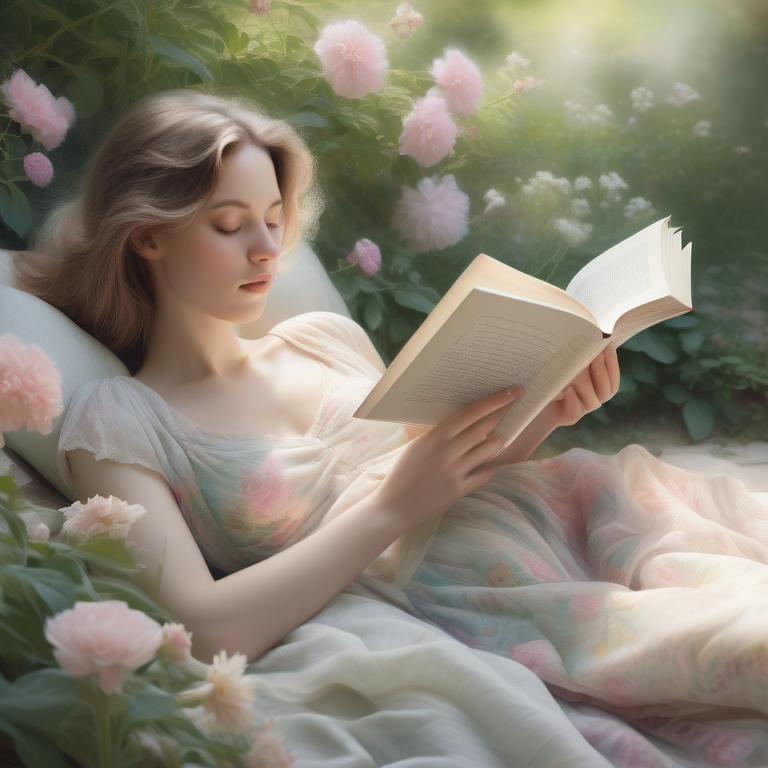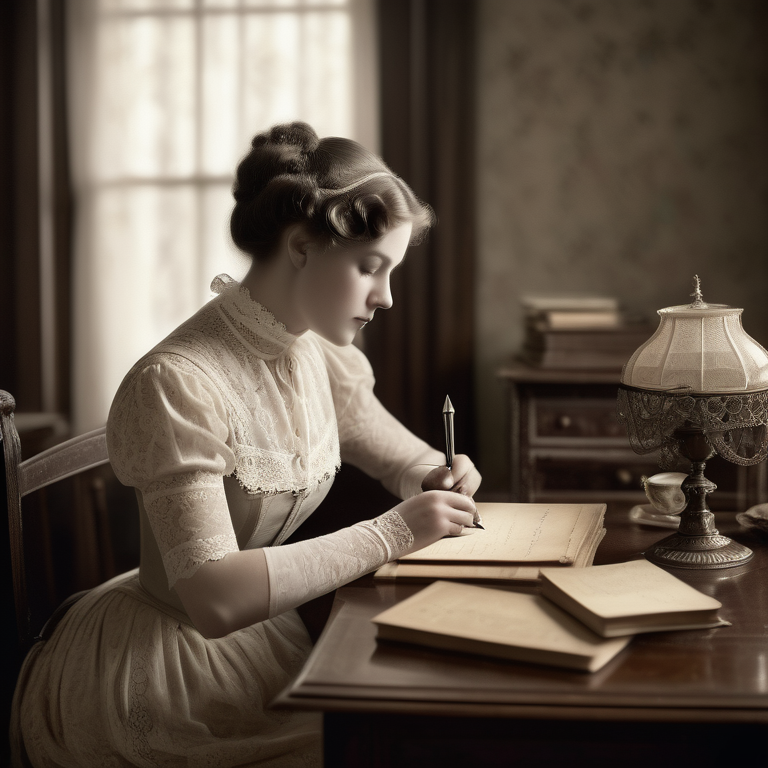Poetry and Women’s Sexuality: Exploring the Intersection

Key Highlights
- Poetry has long been a powerful medium for women to express their sexuality and challenge societal norms.
- Through poetry, women have found a voice for the unspoken a means to explore and celebrate their desires.
- Historical poets like Sappho and Audre Lorde paved the way for the discourse on women’s sexuality in poetry.
- Contemporary women poets continue to break taboos and weave in diverse experiences of sexuality in their work.
- The use of literary devices, such as metaphors and the narrative voice, enhances the conveyance of sexual autonomy in poetry.
- Poetry also has therapeutic potential, allowing individuals to explore and understand their sexuality in a safe and healing space.
Introduction
Poetry has long been a powerful medium for self-expression, allowing individuals to delve into the depths of their emotions and experiences. For women, in particular, poetry has served as a means to explore and celebrate their sexuality, challenging societal norms and reclaiming their own narratives. In this blog, we will delve into the intersection of poetry and women’s sexuality, examining how poetry provides a voice for the unspoken, analyzing themes of femininity and desire, and exploring the impact of literary devices in conveying sexual autonomy. We will also delve into the therapeutic potential of poetry in understanding and embracing women’s sexuality.
The Role of Poetry in Expressing Women’s Sexuality
Poetry has played a significant role in providing a platform for women to express their sexuality. It allows them to navigate and articulate their experiences, desires, and struggles in a way that is both personal and universal. Through the use of language, imagery, and verse, poets can delve into the complexities of gender identity and challenge societal expectations. Poetry has the power to give voice to the unspoken, allowing women to explore and celebrate their sexuality on their own terms.
How poetry provides a voice for the unspoken
One of the key ways in which poetry intersects with women’s sexuality is by providing a voice for the unspoken. Poetry has the ability to convey emotions, experiences, and desires that may be difficult to express in everyday conversations. It allows women to explore the nuances of their sexuality, challenging societal taboos and expectations. Through the use of language, imagery, and metaphor, poets can create a space for women to share their deepest thoughts and experiences, giving voice to the often silenced aspects of their sexuality. By expressing these experiences through poetry, women are able to reclaim their narratives and challenge societal norms.
Historical poets who pioneered the discourse on sexuality
Throughout history, there have been poets who have paved the way for the discourse on women’s sexuality. One such poet is Sappho of Lesbos, whose poetry prominently featured descriptions of female homosexual love. Sappho’s work challenged societal norms and provided a foundation for future discussions on women’s sexuality. Another influential poet is Audre Lorde, whose writings explored the intersections of race, gender, and sexuality. Lorde’s poetry celebrated the power of women’s bodies and voices, challenging patriarchal structures and advocating for self-love and empowerment. These historical poets laid the groundwork for the exploration of women’s sexuality in poetry and continue to inspire contemporary poets today.
Analyzing Themes of Femininity and Desire in Poetry
In addition to providing a voice for women’s sexuality, poetry also allows for the exploration of themes of femininity and desire. Feminist poets have used poetry as a tool to challenge traditional notions of femininity and celebrate the multifaceted nature of women’s desires. Through the use of imagery, symbolism, and verse, poets can capture the complexities of feminine experiences and desires. By exploring these themes, poetry becomes a means to dismantle societal expectations and embrace a more inclusive and empowering understanding of women’s sexuality and feminism.
The symbolism of femininity in poetic expressions
Poetry often utilizes symbolism to convey complex emotions and experiences, and the symbolism of femininity is no exception. Poets use imagery such as flowers, moon, and water to represent femininity and explore the intricacies of women’s desires. By using these symbols, poets can tap into shared cultural understandings and evoke emotions that resonate with readers. The use of symbolism allows for a deeper exploration of femininity and desire, enabling poets to convey the nuances of women’s sexuality in a powerful and evocative manner.
Desire and its multifaceted portrayal in women’s poetry
Desire is a central theme in women’s poetry, and it is often portrayed in a multifaceted manner. Poets explore various aspects of desire, including physical attraction, emotional connection, and the longing for intimacy. Through their words, poets capture the complexity of women’s desires, challenging stereotypes and providing an authentic representation of women’s sexual experiences. By embracing desire in all its forms, women’s poetry celebrates the full spectrum of human sexuality and invites readers to engage with their own desires in a more open and accepting way.
Contemporary Voices: Women Poets of Today
Contemporary women poets continue to push the boundaries of poetry and explore the intersections of gender identity and sexuality. Their work challenges societal norms, breaks taboos, and amplifies diverse voices and experiences. These poets bring a fresh perspective to the discourse on women’s sexuality, weaving in themes of empowerment, self-discovery, and intersectionality. Through their poetry, they provide a platform for marginalized voices and contribute to a more inclusive and nuanced understanding of women’s sexuality in the modern world.
Breaking taboos: Modern poets and their bold exploration of sexuality
Contemporary women poets are breaking taboos and boldly exploring themes of sexuality in their work. They are challenging societal norms and pushing the boundaries of what is considered acceptable in traditional poetry. Some of the ways in which modern poets are exploring women’s sexuality include:
- Embracing explicit language and imagery to convey desires and experiences.
- Addressing topics such as consent, body positivity, and pleasure.
- Incorporating diverse perspectives and experiences, including those of LGBTQ+ individuals.
- Celebrating the complexity and fluidity of sexual identities.
These poets are fearlessly using poetry as a means to celebrate and reclaim women’s sexuality, dismantling taboos and fostering a more inclusive and open dialogue.
Intersectionality in poetry: How contemporary poets weave in diverse experiences of sexuality
Contemporary women poets recognize the importance of intersectionality in the exploration of women’s sexuality. They weave in diverse experiences of sexuality, acknowledging the unique challenges faced by individuals with different identities and backgrounds. By incorporating the voices of marginalized communities, these poets create a more inclusive and comprehensive representation of women’s sexuality. Through their words, they shed light on the intersections of gender, race, class, and sexual orientation, showcasing the complexity and richness of human experiences. By embracing intersectionality, contemporary women poets challenge societal norms and broaden the conversation surrounding women’s sexuality.
The Impact of Literary Devices in Conveying Sexual Autonomy
Literary devices play a crucial role in poetry, enhancing the conveyance of sexual autonomy. Poets often employ metaphors and similes to compare and contrast different aspects of women’s sexuality, allowing readers to explore their own understanding of desire and identity. These devices create a rich tapestry of imagery and evoke emotions that resonate with readers. Additionally, the narrative voice in feminist poetry provides a powerful means of expressing sexual autonomy and reclaiming ownership over one’s body and desires. By utilizing these literary devices, poets empower women to embrace their sexuality and challenge societal norms.
Metaphors and similes as tools for exploring sexual identity
Metaphors and similes are powerful tools that poets use to explore and convey sexual identity. By comparing one thing to another, poets can tap into the nuances of desire, attraction, and identity, allowing readers to engage with these concepts on a deeper level. Metaphors and similes provide a way to articulate the complexities of women’s sexual experiences, allowing for a more nuanced understanding of sexual identity. Through these devices, poets encourage readers to explore and embrace their own unique sexual identities, fostering a sense of empowerment and self-acceptance.
The power of the narrative voice in feminist poetry
The narrative voice in feminist poetry is a powerful means of expressing sexual autonomy and reclaiming ownership over one’s body and desires. By using the first-person perspective, poets create a direct and intimate connection with readers, allowing them to experience the poet’s journey of self-discovery and empowerment. The narrative voice serves as a vehicle for expressing personal experiences, challenging societal norms, and advocating for women’s sexual autonomy. Through the power of storytelling, feminist poets invite readers to reflect on their own experiences and narratives, fostering a sense of solidarity and empowerment.
The Therapeutic Potential of Poetry in Understanding Sexuality
Poetry has a therapeutic potential when it comes to understanding and embracing women’s sexuality. It provides a safe and creative space for individuals to explore and express their desires, experiences, and emotions. Through poetry, women can delve into the complexities of their sexuality, gaining a deeper understanding of their desires, boundaries, and identities. Writing and reading poetry can also be a form of self-reflection and self-discovery, allowing individuals to connect with their own experiences and navigate the challenges and triumphs of their sexual journeys.
Poetry as a medium for healing and self-discovery
Poetry has long been recognized as a powerful medium for healing and self-discovery. Through the act of writing or reading poetry, individuals can gain insights into their own desires, feelings, and experiences. Poetry provides a means of expression that is both personal and universal, allowing individuals to connect with their own emotions and connect with others who may have similar experiences. By exploring and sharing their stories through poetry, individuals can find solace, validation, and a sense of belonging. Poetry offers a unique space for healing and self-discovery, allowing individuals to explore and embrace their sexuality in a supportive and empowering way.
Case studies: How poetry can empower women to explore their sexuality
Empowering Poetry Workshops in Educational Settings In a project facilitated by the World View program at UNC, poetry workshops are integrated into educational curriculums focusing on the UN Sustainable Development Goals, specifically gender equality and quality education. These workshops include activities like blackout poetry and found poetry, enabling women to express their experiences and thoughts on gender and sexuality in creative and empowering ways World View – Empowering Poetry
Celebrating Strength and Resilience through Poetry PoemVerse highlights various poems that celebrate women’s empowerment, including those by Maya Angelou and Audre Lorde. These workshops encourage women to explore themes of strength, resilience, and liberation through writing and discussing powerful poetry. This process helps women articulate their personal experiences and explore their sexuality in a supportive environment PoemVerse – Women’s Empowerment
Transformative Poetry Workshops by Hollie Hardy Hollie Hardy’s poetry workshops provide a supportive and inclusive space for women to explore their creativity and sexuality. These workshops focus on reading, writing, and revising poetry, offering feedback and fostering a community of writers. Many participants have found these workshops transformative, helping them to express their innermost thoughts and experiences through poetry Hollie Hardy – Poetry Workshops
Electrifying Poems for Women’s Empowerment Read Poetry’s collection of empowering poems includes works by Sylvia Plath, Maya Angelou, and Nikki Giovanni. Workshops based on these poems help women explore themes of feminism, strength, and self-worth, providing a platform to delve into their sexuality and personal identities through the powerful medium of poetry Read Poetry – Women’s Empowerment
Empowering Women through Poetry: A Focus on Strength and Liberation An article on PoemVerse discusses how poetry has been used to empower women by celebrating their strength and resilience. Workshops inspired by poems from renowned poets like Maya Angelou and Audre Lorde encourage women to explore their sexuality and personal experiences, fostering a sense of liberation and self-confidence PoemVerse – Strength and Liberation
Poetry as Illumination by IIED The International Institute for Environment and Development (IIED) runs a unique project titled “Poetry as Illumination,” which uses creative writing, including poetry, to explore how gender and sexuality shape research and advocacy work. This project emphasizes the importance of reflexive analysis and discussions on positionality, providing a platform for individuals to express their lived experiences and identities in a supportive environment IIED – Poetry as Illumination
These case studies highlight the transformative power of poetry in empowering women to explore and embrace their sexuality. Through writing and sharing poetry, women find healing, community, and the opportunity to amplify their voices.
Conclusion
In exploring the intersection of poetry and women’s sexuality, we uncover a rich tapestry of expression that empowers and enlightens. From historical pioneers to contemporary voices, poetry serves as a powerful medium for articulating desires, breaking taboos, and celebrating diverse experiences. Through metaphors and narrative voices, poets convey themes of femininity and desire with grace and autonomy. Moreover, poetry workshops offer therapeutic journeys of self-discovery and healing. As we reflect on the evolution of this intersection over time, we recognize poetry’s pivotal role in feminist movements and reshaping societal perceptions. Join the conversation by commenting below and adding your voice to this inspiring dialogue.
Frequently Asked Questions
What role has poetry played in feminist movements?
Poetry has played a crucial role in feminist movements, providing a platform for women to express their experiences, desires, and challenges. It has served as a means to challenge patriarchal structures, celebrate women’s sexuality, and amplify marginalized voices. Through poetry, feminist movements have fostered a sense of empowerment, solidarity, and change.
Can poetry influence societal perceptions of women’s sexuality?
Yes, poetry has the potential to influence societal perceptions of women’s sexuality. Through the power of language and creative expression, poetry can challenge societal norms, break down stereotypes, and create a more inclusive and nuanced understanding of women’s desires, experiences, and identities. By amplifying diverse voices and experiences, poetry can contribute to a shift in societal perceptions and foster a more accepting and inclusive society.
What role does poetry play in expressing women’s sexuality?
Poetry plays a vital role in expressing women’s sexuality. It provides a unique and creative space for women to explore, articulate, and celebrate their desires, experiences, and identities. Through the power of language and verse, poetry enables women to reclaim their narratives, challenge societal norms, and foster a greater understanding and acceptance of women’s sexuality.
How can poetry be used as a tool for exploring and celebrating women’s sexuality?
Poetry can be used as a powerful tool for exploring and celebrating women’s sexuality. Through the act of writing and reading poetry, women can delve into the complexities of their desires, challenge societal expectations, and embrace their own unique expressions of femininity and desire. Poetry provides a space for self-reflection, empowerment, and celebration of women’s diverse and multifaceted sexual experiences.
Are there specific themes or motifs commonly found in poetry about women’s sexuality?
Yes, there are several themes and motifs commonly found in poetry about women’s sexuality. These include the exploration of desire, the celebration of femininity, the complexities of identity, the power dynamics within relationships, and the reclaiming of agency and autonomy. These themes and motifs allow poets to delve into the nuances of women’s sexual experiences and challenge societal norms.
How has the intersection of poetry and women’s sexuality evolved over time?
The intersection of poetry and women’s sexuality has evolved over time, reflecting the changing social and cultural landscapes. Historically, women poets like Sappho and Audre Lorde paved the way for discussions on women’s sexuality. Today, contemporary poets continue to challenge taboos, embrace intersectionality, and amplify diverse voices, contributing to a more inclusive and nuanced understanding of women’s sexuality through poetry.




